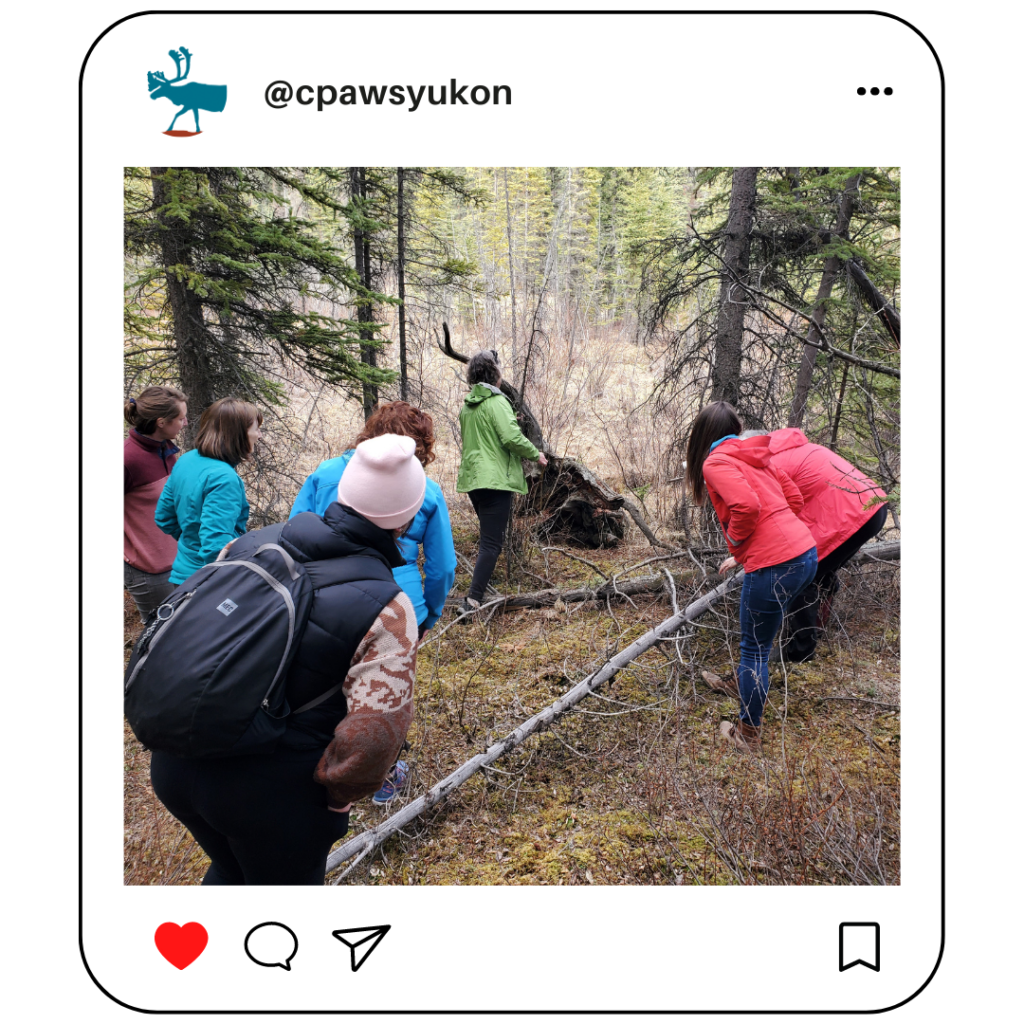Corridors & Community Engaged Art
Written by Nicole Shafenacker and Paula Gomez Villalba.
Photos by Nicole Shafenacker.
May 24, 2023
As the snow continues to melt and the weather warms, there are changes to be felt in the water, air, and soils of the boreal forest. From hearing new birdsong to seeing the intricate patterns of new shoots coming out from the ground, new beginnings are just around the corner.
Yukoners are no strangers to connecting with nature. Hiking steep trails, hunting, and paddling through winding rivers are all common pastimes. But what we’ve come to learn is that connecting with nature doesn’t always have to be a big adventure.
We can connect with nature through a creative lens by asking, how can art help us relate to our surroundings differently? What role does emotion play in social change? How can small creative acts and daily rituals deepen our relationship to place?
This is what community-engaged art is all about. Art can be a way to foster relationships and nurture our individual capacities for growth, change, and connection.
Beyond affecting us as individuals, beauty and aesthetics can also play a big role in fostering social change, with natural sciences and creative arts working together towards this end.
Through art and aesthetics we can expand our way of seeing the world and our capacity to value the exquisitely complex life forms around us. We can connect to place in different ways, learning to share these experiences, memories, and feelings with others.
What are some of your favourite sensory memories of springtime? What are sounds, smells, or textures that let you know spring is on the way?
When out in nature, we can explore the way our senses take in the life happening all around us. For example, the way a flower smells or how a leaf feels can help us identify the plant and give it a name. It can also call back fond memories of foraging with friends or bring about a sense of gratitude and peace. These sensory connections can also serve as rich source material for making art. They can spark creativity and self-reflection.
Whether it’s through the light, animals, trails, or history, the values of our wild spaces are far reaching. One area of the forest can provide nutrients to microbes in the soil while another can settle a restless human after a long day at work.
Across the Yukon there are many thriving wild spaces where we can connect with nature; the territory is blanketed in forests. In Whitehorse, Chasàn Chùa/McIntyre Creek is home to boreal forests, wetlands, and many animals that use it as a wildlife corridor. The web of connections here are rooted in ecology and culture, but also in our physical and emotional wellbeing.
We’ve worked hard, alongside other people and organizations, to highlight why this creek matters. And thanks to our efforts and your support, Chasàn Chùa will be protected as a park in the future. We encourage you to spend some time learning about Chasàn Chùa, making sure to respect the land and wildlife whose home we are sharing. Nurture your senses, get creative, and share your stories with others.
This blog post is a social media roundup based on posts shared Spring 2022 as part of Corridors: A Community Engaged Art Series of events in Chasàn Chùa/McIntyre Creek, led by Nicole Shafenacker.

 “One of my favourite daily rituals that brings me closer to the natural spaces around me is taking a walk down to Marsh Lake (where I live) with my dog and notice how the water changes throughout the year.” – Nicole Shafenacker
“One of my favourite daily rituals that brings me closer to the natural spaces around me is taking a walk down to Marsh Lake (where I live) with my dog and notice how the water changes throughout the year.” – Nicole Shafenacker “We’re living through the world’s sixth great extinction, one caused by us. The landscapes around us grow emptier and quieter each passing year. We need hard science to establish the rate and scale of these declines, to work out why it is occurring and what mitigation strategies can be brought into play. But we need literature, too; we need to communicate what the losses mean.
“We’re living through the world’s sixth great extinction, one caused by us. The landscapes around us grow emptier and quieter each passing year. We need hard science to establish the rate and scale of these declines, to work out why it is occurring and what mitigation strategies can be brought into play. But we need literature, too; we need to communicate what the losses mean. “I love watching smooth, fresh leaves unfurl on branches that have been bare all winter long.” – Nicole Shafenacker
“I love watching smooth, fresh leaves unfurl on branches that have been bare all winter long.” – Nicole Shafenacker
